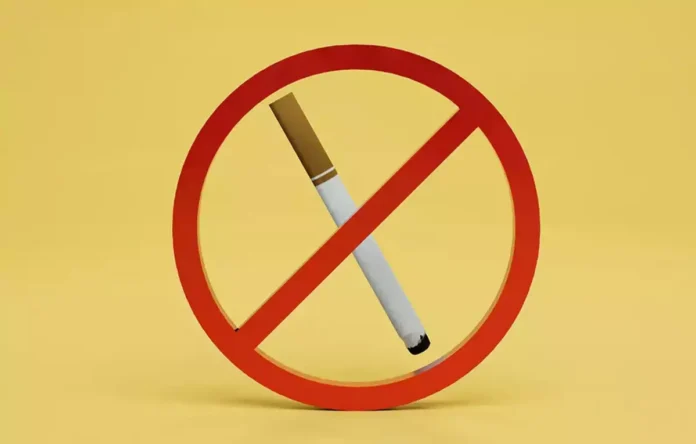Impact of New Anti-Tobacco Ad Rules on Digital Streaming Platforms.
The Union Health Ministry of India has recently taken a major step towards strengthening its anti-tobacco ad regulations by proposing new rules that target over-the-top (OTT) streaming platforms, including popular names like Netflix, Amazon Prime Video, Jio Cinema, Sony LIV, ALTBalaji, and Voot. These platforms, which have become an integral part of entertainment consumption in India, will soon have to comply with stringent anti-tobacco ad measures aimed at educating viewers about the harmful effects of tobacco.
The proposed amendments, titled “The Cigarette and other Tobacco Products (Prohibition of Advertisement and Regulation of Trade and Commerce, Production, Supply, and Distribution) Amendment Rules, 2024,” are part of the government’s broader strategy to curb tobacco use in the country. Tobacco use remains one of the leading causes of preventable deaths in India, responsible for nearly 1.35 million deaths annually. This staggering toll on public health has led the government to prioritize the regulation of tobacco-related content across all forms of media, including the rapidly growing OTT space, which often escapes the traditional regulatory framework governing broadcast television and cinema.
Under the new draft rules, all films and shows—whether of Indian or foreign origin—released after September 1, 2023, must display anti-tobacco ad health warnings prominently. These rules are not limited to films certified by the Central Board of Film Certification (CBFC); they apply universally to all digital content published on OTT platforms. Specifically, the rules require that each piece of content must begin with a 30-second anti-tobacco ad health spot, followed by another health spot of the same duration in the middle of the film or show.
Additionally, when viewers open any OTT platform, a non-skippable audio-visual disclaimer on the ill effects of tobacco use, lasting a minimum of 20 seconds, must play immediately. This disclaimer is designed to ensure that users are confronted with health warnings about tobacco use before they even start consuming content. Importantly, these health spots and disclaimers must be non-skippable, meaning viewers cannot bypass them, ensuring maximum visibility for the government’s anti-tobacco ad.

One of the most striking aspects of the new rules is the requirement for static health warnings during scenes that depict tobacco use. Whenever a character in a film or show is shown using tobacco products—whether smoking cigarettes, using chewing tobacco, or any other form of tobacco consumption—a static health warning must be prominently displayed at the bottom of the screen.
This message will remain on-screen for the entire duration of the scene involving tobacco use, serving as a constant reminder to viewers of the dangers associated with such products. This approach represents a significant shift from the current rules, which only mandate the display of warnings during the content itself, not immediately upon opening the platform or throughout the entire duration of scenes that feature tobacco use. By making these health warnings an unavoidable part of the viewing experience, the government aims to further discourage the glamorization of smoking and other forms of tobacco consumption.

The rationale behind this move is rooted in the government’s commitment to public health. With tobacco use being a major contributor to preventable diseases and deaths, India has been at the forefront of global efforts to regulate and control tobacco consumption. In May 2023, India became the first country in the world to make it mandatory for OTT platforms to display anti-tobacco health spots and disclaimers, similar to those seen in movies screened in theatres and on television.
However, the new 2024 draft amendments go a step further by making the display of health warnings even more prominent and comprehensive. This decision reflects the government’s recognition of the growing influence of digital media, particularly OTT platforms, which are now consumed by millions of viewers across the country. The goal is to ensure that health warnings reach as wide an audience as possible, particularly among younger viewers, who are increasingly turning to streaming platforms for their entertainment.

The Evolution of Anti-Tobacco ad Laws in Digital Media Enforcing Health Warnings: Government’s Push for Compliance
For OTT platforms and content creators, these new regulations present both technical and creative challenges. Platforms like Netflix, Amazon Prime Video, and others will need to incorporate these mandatory health warnings into their content delivery systems, which could require significant changes to their existing infrastructure.
Additionally, for foreign films and shows that have already been released, platforms may need to retrofit the required health warnings, which could be a costly and time-consuming process. This is particularly challenging given the global nature of many OTT platforms, where content is often imported from other countries that do not have similar regulations in place. For content creators, the new rules may influence how tobacco use is portrayed in their work. Filmmakers and producers will now need to consider whether the inclusion of tobacco use is worth the accompanying static health warnings, which could detract from the viewing experience. Some creators may choose to avoid depicting tobacco use altogether to sidestep these requirements.

While some viewers may find the non-skippable nature of these health warnings intrusive, the government’s stance is clear: public health takes precedence over any minor inconvenience.
The harmful effects of tobacco are well-documented, and the government believes that constant reminders about these dangers are essential to curbing tobacco use. Research has shown that visual health warnings are an effective tool in deterring tobacco consumption, and by mandating these warnings across OTT platforms, the government hopes to reduce the appeal of tobacco, particularly among impressionable audiences. In addition to protecting public health, these measures also align with India’s broader tobacco control strategies, which include higher taxes on tobacco products, restrictions on advertising, and bans on smoking in public places.
The new anti-tobacco ad regulations for OTT platforms have sparked a broader debate about the role of government in regulating digital content. On one hand, the government has a responsibility to protect its citizens from harmful behaviors like smoking, which poses significant risks to both individual and public health.
On the other hand, there are concerns that too much regulation could stifle creativity and limit freedom of expression in the digital space. Content creators, in particular, may feel that the constant display of health warnings interferes with their artistic vision or disrupts the storytelling process. For example, period films or shows that realistically depict tobacco use as part of the historical context may lose some of their authenticity due to the prominent display of health warnings during key scenes.
Despite these concerns, public health advocates argue that the risks associated with tobacco far outweigh any potential impact on creative expression. Tobacco use continues to be a major public health crisis, not just in India but around the world. The World Health Organization (WHO) estimates that tobacco kills more than 8 million people globally each year, with around 1.35 million of these deaths occurring in India. Given these staggering statistics, governments have a duty to take whatever steps are necessary to reduce tobacco consumption, particularly among younger populations who are most susceptible to the influence of media.
In conclusion, the Union Health Ministry’s proposed amendments to the anti-tobacco rules for OTT platforms mark a significant step in India’s ongoing battle against tobacco use. By mandating non-skippable health spots, disclaimers, and static warnings, the government is ensuring that anti-tobacco messages reach a wide audience and cannot be easily ignored.
These measures, though challenging for OTT platforms and content creators, reflect the government’s commitment to protecting public health in the digital age. As these rules move towards final implementation, they will serve as a powerful reminder of the dangers of tobacco and the need for continued vigilance in the fight against tobacco addiction.

